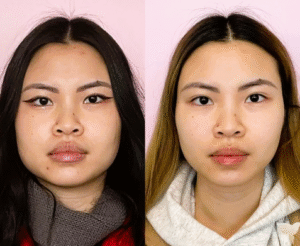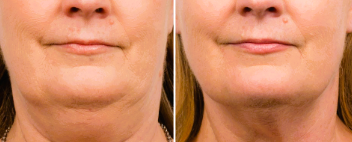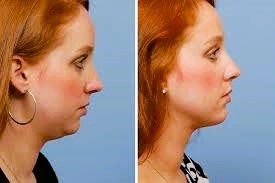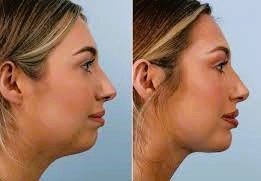How to Get a Snatched Jawline: Ultimate Guide to a Chiseled Jawline
Summary
This guide covers all the ways to achieve a sharp, defined jawline—naturally or with cosmetic help.
Natural Methods: Try jaw exercises, mewing, good posture, healthy diet, facial massage, and skincare to reduce puffiness and firm the jawline.
Makeup Tricks: Contouring and highlighting can instantly create the look of a sculpted jaw.
Non-Surgical Options: Fillers, Botox, Kybella, and skin-tightening treatments offer fast, temporary results without surgery.
Surgical Procedures: Liposuction, chin implants, jaw reshaping, and neck lifts provide permanent, dramatic changes.
Safety First: Always consult professionals and be cautious with DIY tools or overdoing exercises.
Perfect for anyone wanting a slimmer, more sculpted face—whether you’re into natural tips or ready for cosmetic upgrades.
What Is a Snatched Jawline and Why Is It So Desired?
A snatched jawline means a sharp jaw with no fat or loose skin. It gives a smooth, young look. People often see it as a sign of health and style.
The word “snatched” came from drag culture. Now, it means any part of the body that looks tight or shaped. Stars like Bella Hadid and Kendall Jenner have this kind of jawline.

Why do people want a snatch jawline?
These days, selfies and TikTok make a sharp jawline very popular. People see it as a sign of health, youth, and good genes. It makes the face look slim and camera-ready.
After 2020, more people care about jawlines. This is because of the “Zoom effect.” Video calls made them notice their chin and jaw more.
Now, TikTok is full of jawline posts. The hashtag #snatchedjawline has over 210 million views. This look is trending because many think slim, sharp faces are more beautiful.
How to Get a Snatched Jawline Naturally (No Surgery or Needles)
You don’t need surgery to shape your jaw. There are easy, natural ways to help. These steps can make your jaw look firm and slim.
But you need to be patient. It takes time and steady effort. You won’t see results right away.
Here are a few simple things you can try:
Jawline Exercises and Facial Yoga
You can shape your jaw by doing simple face exercises. These moves help tighten your jaw and neck. Over time, your jaw may look more firm. Try these:
Chin Lifts: Tilt your head back. Look up. Move your lower lip over your top lip. Hold for a few seconds. This stretches your neck.
Jaw Juts: Keep your mouth shut. Push your jaw forward and lift your lower lip. Hold, then relax. This works the jaw muscles.
Neck Curls: Lie down. Tuck your chin in and lift your head a little. It looks like making a double chin. Lower your head and do it again. This firms the area under your chin.
Vowel Sounds: Say “O” and “E” in a big way. This helps tone your lips and jaw.
Another method is mewing. It means placing your tongue flat on the roof of your mouth. Some say it shapes the jaw over time. It helps with good tongue posture and breathing through your nose. It takes time, not days. Some people even use mouth tape at night to help with this.
Be careful. Do not chew on hard things or use jaw tools too much. These can hurt your jaw or teeth. Some people get jaw pain or clicking. If it hurts, stop right away.

Posture and Tongue Position (“Mewing”)
How you sit and stand can change how your jaw looks. Bad posture, like slouching or looking down at your phone, can cause a double chin or neck lines—even if you’re young.
Here are a few easy ways to help:
Stand Tall: Keep your head up. Pull your shoulders back. Try to line up your head with your spine. This makes your jawline look longer and neater right away.
Avoid “Tech Neck”: Don’t look down at your phone for too long. Hold it up to eye level. This stops skin folds from forming on your neck.
Try Mewing: Place your tongue on the roof of your mouth when you’re not talking or eating. This may help tone your face over time. It also helps you breathe through your nose.
Good posture and tongue habits can help you look more confident. They also make your jaw and chin look better by stopping the droop caused by bad posture.

Diet, Weight Management, and Hydration
Body fat changes how your face looks. If you have extra fat, losing some can show off your jawline and cheekbones.
Eating healthy and staying active can help slim your face and neck. This makes your jaw look sharper.
But if you’re already at a good weight and still have a rounder face, it might be due to genes. In that case, losing more weight won’t help much and might even make you look tired.
Eat foods that are good for your skin and muscles. Choose lean meats, fruits, veggies, and whole grains. Try to eat foods with vitamin C, protein, and omega-3. These help keep your skin firm.
Cut back on salty snacks and alcohol. They can make your face puffy by holding water.
Drink lots of water each day. This helps reduce puffiness and makes your face look slimmer. Some people see a big difference after just one night of drinking more water and eating less salt.
In short, losing fat and avoiding bloat can help your jaw stand out. But don’t go on crash diets. They can harm your face and body. Slow and steady is best.
Facial Massage and Gua Sha for Jawline Definition
You can shape your face with simple tools and massage. Gua sha stones and jade rollers are very popular. They help your face look firm and fresh.
Gua Sha is an old Chinese method. It uses a smooth stone, like jade, to gently scrape the skin. You glide it from your chin to your ear, then down your neck. This helps remove puffiness and shows your jawline better. Many people see a more toned face after one session. For best results, use light pressure and a bit of face oil.

Facial Massage also works well. You can use your hands or a roller. Massage your jaw, chin, and neck every day. This can relax tight jaw muscles and wake up your skin. Try soft pinching or small circles under your ears.

Face Yoga helps too. Tilt your head and press your hand against your jaw. Then slide it slowly along the bone. This move works like a soft massage.

These steps don’t burn fat. But they do tighten your skin and cut puffiness. They also boost blood flow, which may help make more collagen. Best of all, they feel good and cost little. Do them every day or a few times each week. Always move your hands up and out to lift your skin, not pull it down.
Skincare for a Tighter Jawline and Neck
Skincare can’t change your bones. But it can make your jawline look better by firming your skin. Loose skin can hide your jaw shape. Here’s how to fix it the natural way:
Use Retinol: Retinol boosts collagen and makes skin tight. Use a cream with retinol or a gentler one like retinyl palmitate. Apply it on your face and neck. Be careful with the neck—it’s sensitive. Over time, this helps reduce neck lines and sagging.
Try Peptides and Vitamin C: Use creams or serums with peptides and antioxidants. These help build strong skin. They also plump and smooth it. Look for “firming” or “lifting” labels. Your skin will feel tighter and look fresh.
Don’t Skip Sunscreen: The sun can make skin sag. Use SPF 30 or more every day. Put it on your chin, neck, and jaw. This keeps skin strong and helps stop jowls and wrinkles.
Take Collagen: Some people take collagen or vitamins for skin. They may help your skin stay stretchy. It’s not a fast fix, but it might help over time.
Try not to gain or lose weight too fast. That can stretch your skin. And avoid smoking—it makes skin sag faster. For the best results, use these tips every day. They’ll help your jawline stay smooth and firm.
Makeup Contouring Tricks for a Sharper Jawline
Makeup is a quick way to make your jawline look sharp. It gives fast results without any change to your body. In beauty talk, “snatched” means using makeup to shape your face. Here are some easy tips:
Use Contour: Pick a matte contour powder or cream that’s a bit darker than your skin. Brush it under your jaw, from chin to ear. This makes a shadow that shapes your jaw. Always blend it well so it looks smooth.
Add Highlight: Use a light powder or shimmer on your chin and just above your jaw. This makes those parts stand out. The light and dark together make your jaw look more sculpted.
Blend It Down: Some people also blend contour a little onto the neck. This deepens the shadow and can hide a double chin in photos. Make sure there are no sharp lines.
Use Bronzer or Darker Foundation: A soft contour works too. Just sweep a darker foundation or bronzer along your jaw. It’s perfect for a natural, everyday look.
Brighten Below: Put some light concealer under your chin, in the center of your neck. This bright spot makes the dark shadow pop more, so your jaw looks sharp.
These tricks work fast and wash off easily. Stars in Hollywood have used them for years. Paired with a tight ponytail or bun, your jaw will look more defined in seconds. Keep practicing, and try makeup videos that match your face shape for the best look.

Non-Surgical Cosmetic Treatments for a Defined Jawline
If natural tips haven’t worked for you and you don’t want surgery, there are other ways to shape your jawline. Some treatments give fast results without long recovery. You can get them at a medspa or clinic—often in under an hour.
Jawline Fillers
One top option is jawline fillers. A doctor or skin expert injects a soft gel called filler into your jaw or chin. Most fillers are made from hyaluronic acid (like Juvederm or Restylane). Others, like Radiesse, last even longer.

Here’s what fillers can do:
Make your jaw look sharp: Fillers add volume to the jaw or chin, making your face look more shaped.
Fix uneven sides: If your chin or jaw isn’t even, fillers can balance it out.
Smooth jowls: Fillers can fill in saggy or hollow areas to make the jaw look smooth.
First, your skin is numbed. Then, the doctor gives a few small injections along your jawline. You’ll see the change right away. Some swelling or bruises may show for a few days. The results last around 12 to 18 months. You can get touch-ups to keep the look.
Pros:
No surgery needed
Quick and easy
You can pick a soft or bold look
If you don’t like it, it can be undone (with an enzyme)
Cons:
It can cost a lot (from a few hundred to over a thousand dollars)
You might get bruises or swelling
Rarely, fillers can cause problems if not injected right
That’s why you must go to a skilled expert. Done right, fillers can give you a sharp, natural-looking jawline—fast.
Botox for Jawline Slimming (Masseter Reduction)
Botox isn’t just for smoothing wrinkles. It can also change how your jaw looks. Here are two ways Botox helps shape the jawline:
Masseter Slimming:
If your jaw looks wide from strong chewing muscles (near your ears), Botox can help. It relaxes these muscles. Over time, they shrink. This makes your face look slimmer and more V-shaped. Many people in Asia love this treatment. It also helps with teeth grinding or tight jaws. The results last 3 to 6 months. To keep the look, you’ll need it done again a few times a year.

Nefertiti Lift:
Botox can lift your lower face too. It’s injected along the neck muscles that pull the jaw down. When these relax, the skin lifts. This gives a smooth neck and a sharper jawline. It’s called the “Nefertiti lift,” named after the queen known for her long, graceful neck.

Botox treatments are fast. You’ll just feel a few tiny pinches. For masseter slimming, it takes 1 to 2 weeks to see changes. For the neck lift, results show up even sooner.
Pros:
No surgery needed
Fast and easy
Can ease jaw pain and tension
Makes the face look softer and more shaped
Cons:
Results don’t last forever—you may need 2–3 visits each year
Too much Botox can make chewing weaker or the face look odd
It’s not cheap (costs a few hundred dollars per session)
Always go to a trained expert for best and safest results
Kybella (Fat-Dissolving Injections) for Double Chin Reduction
A double chin can hide your jawline. If you want to fix it without surgery, Kybella is one option. It’s an FDA-approved shot that melts fat under the chin.

How it Works:
Kybella is a man-made acid. It helps break down fat. A doctor injects it under your chin. Over time, your body removes the fat cells. Once they’re gone, they don’t come back—as long as you don’t gain a lot of weight.
You’ll get tiny injections in a pattern under your chin. Most people need 2 to 4 treatments, one month apart. Each session may use 1 to 2 vials of the product.
After Treatment:
Expect some swelling. It can last a few days or a full week. This is normal—some people call it “bullfrog neck.” You might also get bruises, numbness, or firm spots. As it heals, your chin should look smaller and tighter.
Pros:
It melts fat without surgery
No cuts, stitches, or scars
If your skin is firm, it may tighten naturally
Results can be permanent with steady weight
Cons:
Swelling is common
You may need 2–4 sessions
Each session costs $600–$800
Full results take a few months
Rare side effects: nerve pain, lumps, uneven fat loss
Always go to a skilled, licensed doctor. If done right, Kybella can give you a sharp, clean jawline.
Want a non-injection option?
Try CoolSculpting with a “CoolMini” tool. It freezes fat cells under the chin. The body clears them over a few weeks. It may need 1–2 sessions. Swelling is usually less than with Kybella. But in rare cases, fat can grow back oddly.

Thread Lifts for Jawline Tightening
Thread lifts are a new way to shape your jawline without surgery. They sit between fillers and a full facelift. A doctor places thin threads under your skin. These threads have tiny hooks that grab and lift the skin. The doctor pulls them tight and anchors them in place.
For the jaw, this can lift sagging cheeks or jowls. It also helps outline the jawline. The result is a sharper, younger-looking jaw. As the threads dissolve, they boost collagen. This makes your skin firmer over time. The lift lasts about 12 to 18 months.
What to Expect:
The treatment uses only local numbing. It takes less than an hour. Afterward, you might feel sore or see swelling or bruising for a few days. Some people see bumps or puckers, but these smooth out in a week or two. Avoid rubbing your face or opening your mouth wide while the threads settle.
Pros:
Quick results
No cuts or stitches
Little downtime
Great for mild sagging
Boosts collagen for smoother skin
Cons:
Not as strong as a facelift
Effects fade in a year or so
Rare risks: thread movement, bumps, or infection
Threads can show in very thin skin
Cost: $1,500–$4,000+, based on how many threads you need
Thread lifts are great if you want a light lift without going under the knife. With care and the right doctor, they can give you a firmer jawline with almost no downtime.
Skin Tightening Treatments (Ultherapy, Thermage, and More)
If you have loose skin or mild sagging—not extra fat—energy-based devices can help tighten your jawline. These treatments don’t need surgery and can make your face look firm and fresh. They work by heating the deep layers of your skin to boost collagen, which helps tighten and smooth.
Common Options:
Ultherapy (Ultrasound):
Ultherapy uses focused sound waves under the skin. It helps your body make more collagen. Doctors often use it on the jaw and under the chin. There are no cuts—just an ultrasound wand on your skin. It can feel a bit painful, but there’s no downtime. Results show slowly over 2–3 months and can last 1–2 years. One session is often enough.
Thermage (Radiofrequency):
Thermage uses heat from radio waves. It targets deep layers of the skin to lift and tighten. It’s often more comfortable than Ultherapy and feels warm. Newer tools like Morpheus8 use tiny needles plus radio waves to also reduce fat under the chin.
Laser Tightening:
Some laser treatments help make your skin tighter and smoother. They boost both collagen and elastin. These lasers are often used to improve skin texture and firmness.
IPL and LED:
These are light-based treatments. They’re better for fixing skin tone, but they may also help boost collagen a bit. They’re gentle and support healthy, glowing skin.

Pros:
No surgery
Short recovery time (maybe a little redness or swelling)
Improves loose skin and fine lines
Makes skin look smoother and younger
Most people go back to normal life right away
Cons:
Not cheap: each session can cost $1,500 to $3,000 or more
Results take time (weeks to months)
Not for deep jowls or double chins with fat
Some people may feel pain during Ultherapy
Results fade over time, so you might need it again every year or two
These treatments are great for early signs of aging. But if your jawline has more fat or sagging, you might need something stronger like filler, Kybella, or surgery. Always talk to a licensed expert to find what’s best for your skin.
Other Minimally Invasive Jawline Contouring Options
There are many other ways to shape your jawline—no surgery needed. These options work in different ways and can be used together for better results.
Chin Filler or Chin Botox
A small or short chin can make the jaw look weak. Filler adds shape and length to the chin, making the jawline look sharper. Botox can smooth the chin’s texture and even drop it a little to stretch the jaw area.
Buccal Fat Reduction (Non-Surgical)
Removing cheek fat can make your jaw stand out more. While surgery is one option, some clinics use injections or radiofrequency (RF) to shrink fat and tighten the skin. This gives a more hollow, sculpted cheek look that helps highlight the jaw.
Home Devices for Facial Sculpting
Tools like microcurrent devices (like NuFACE), jaw trainers, or face taping kits are popular at home. Microcurrent tools send gentle pulses to lift and firm skin. Face taping pulls back loose skin for a quick fix—just hide the tape with your hair!
Balancing Fillers in Face
Some experts place fillers in the cheeks or midface to pull the face upward. This shift in volume makes the jawline look more lifted and clean. Others may use Kybella to shrink fat in key spots for balance. This is more advanced and best done by skilled injectors.
Surgical Options for Jawline Contouring
For a bold, long-lasting jawline change, surgery is the most powerful option. It reshapes the jaw, chin, and neck in ways non-surgical treatments can’t. It’s best for those with major concerns or looking for permanent results.
Chin & Neck Liposuction (Submental Lipo)
This removes fat under the chin and around the neck using a thin tube. It takes about 30–60 minutes and is done with local or general anesthesia. Tiny cuts are made under the chin or behind the ears. Fat is then suctioned out, helping create a slimmer neck and sharper jawline.

Best for: Younger people (20s–40s) with firm skin and extra fat
Recovery: Wear a chin wrap for a week. Swelling and bruising last 1–2 weeks. Most people look good after 2 weeks, full results show in a few months.
Results: Permanent fat removal. The jaw looks sharper, and the neck slimmer. But weight gain can still enlarge remaining fat cells.
Pros:
One-time, long-term results
Small hidden scars
Quick recovery for many
Cons:
It’s surgery—risks include infection, bleeding, and rare nerve issues
Loose skin may need a lift afterward
Costs: $3,000–$6,000 (often similar to Kybella over time)
Chin Augmentation (Implants or Genioplasty)
A small chin can weaken your jawline—even if you’re slim with tight skin. Chin augmentation adds projection and structure, making your jawline look sharper. Two main options are chin implants and sliding genioplasty.

Chin Implant
A silicone implant is placed on the chin bone through a cut under the chin or inside the mouth. It boosts chin size and jawline shape. The surgery takes about an hour. Swelling is mild, and most people return to work in a week. The implant stays in unless removed and looks very natural.
Sliding Genioplasty
This is a bone surgery where the chin bone is cut and moved forward. It helps adjust size, shape, or unevenness. The bone is held in place with plates or screws. Healing takes longer than with an implant but offers lasting, natural results.
Results
Both options sharpen the neck-chin angle and improve your profile. From the front, a wider chin can smooth early jowls and balance your face. It may even make your nose look smaller.
Pros:
Permanent solution
Great for weak or small chins
Can be combined with lipo or a neck lift
Cons:
Implants may shift or cause minor numbness
Genioplasty is more invasive with longer recovery
Cost: $3,000–$6,000+ depending on procedure
Jawline Reshaping Surgery (Mandible Contouring or Implants)
For those wanting a bold, lasting jawline change, jawline contouring surgery can reshape the jaw permanently. It can either make the jaw larger and sharper or slimmer and more V-shaped, depending on your goals.

Main Surgical Options:
Jaw Implants:
These are placed near the ears (gonial angle) or along the full jawline to add shape and definition. They’re like chin implants and can make the jaw look square (for men) or sleek (for women). Cuts are made inside the mouth or near the ears.
Mandible Reduction (V-line surgery):
Common in East Asia, this removes bone to narrow a wide or square jaw. It’s done under general anesthesia with a few weeks of healing. Great for a softer, slimmer jaw—not just a “snatched” look.
Jaw Osteotomy (Orthognathic surgery):
This moves the jaw bones to fix bite issues and improve shape. It’s major surgery, usually done for medical reasons but can enhance symmetry and contour too.
Custom Implants:
Surgeons can design implants with 3D scans to match your face exactly. These are used for full lower-face reshaping.
Recovery:
Swelling lasts weeks to months. You might have bruising, need a soft diet, and wear a chin wrap or band. Pain is mild and managed with meds.
Results:
Once healed, changes are dramatic and permanent. A soft jaw can become sharp. A square jaw can become slim and oval-shaped.
Pros:
Permanent change to bone shape
No need for regular upkeep
Custom results for your face
Cons:
High cost ($5,000–$15,000)
Risks: infection, nerve issues, or unwanted results
Longer healing time
Revision may be needed
If you want a lasting transformation and have tried non-surgical options, this may be the right choice. But always choose a skilled facial surgeon and discuss your goals in detail.
Neck Lift (Lower Facelift) for Jawline Definition
A neck lift or lower facelift is a surgery that tightens loose skin and muscles in the lower face and neck. It’s ideal for people with jowls, sagging skin, or a “turkey neck”—especially after aging or weight loss.

How It Works:
The surgeon makes small cuts near the ears or under the chin. They tighten the neck muscles (platysma) and remove extra skin. The skin is pulled up and trimmed for a smooth, younger look. It’s often done with a lower facelift to fix smile lines and drooping around the mouth.
Results:
The jawline looks sharper, and the neck looks tighter. It can remove a double chin and smooth jowls. Many people say they look 5–10 years younger after healing.
Recovery:
Done under anesthesia
Go home the same day or stay overnight
Normal activity in 2 weeks; full recovery in 4–6 weeks
Mild swelling, bruising, and tightness
Pain is low and managed with meds
Wear a chin wrap for a few days
Pros:
Long-lasting and dramatic results
Treats both skin and muscle
Great for people 50+
Can be combined with chin implants or liposuction
Cons:
Costs $8,000–$15,000+ (up to $50,000 with top surgeons)
Risks: scarring, infection, nerve issues
Recovery takes time and care
Mini-lifts are a lighter option for people in their 40s
Buccal Fat Removal (Cheek Contouring)
Buccal fat removal isn’t a jawline procedure, but it can make the jaw look sharper by slimming the cheeks. It removes fat from the lower cheeks (where you pinch for a “fish face”), making the cheekbones pop and the jawline more defined. The result is a slimmer, model-like face.

How It Works:
The surgeon makes small cuts inside your mouth to remove the fat pads. Stitches are hidden inside the cheek. It’s done with local anesthesia or light sedation.
Recovery:
Mild swelling and soreness for a few days
Soft foods and mouth rinsing are needed
Final results show in a few weeks to months
Results vary based on how much fat is removed
Pros:
Permanently slims the cheeks
Makes the jawline and cheekbones stand out
No visible scars
Quick, low-risk procedure
Ideal for people with round faces
Cons:
May look too hollow as you age
Not for those with little cheek fat
Doesn’t fix a weak chin or double chin
May highlight an already weak jaw
Cost: $2,000–$5,000
Rare risks: infection, nerve damage
Cost and Longevity Considerations

Safety and Health Considerations
Whether you’re doing exercises or using cosmetic tools, safety comes first. Your jaw has sensitive muscles, bones, and nerves that can be easily harmed. A sharp jawline isn’t worth risking your health.
Are Jawline Exercises & DIY Tools Safe?
Too Much Exercise:
Overdoing jaw workouts or chewing hard items can hurt your jaw joint (TMJ). Pain, clicking, or locking are warning signs. Stop if you feel pain—jaw strain is not worth it.
Tooth Damage:
Biting resistance tools or gum often can crack teeth or wear enamel. Some people chip teeth using DIY tools. Ask your dentist before starting.
Neck Strain:
Some moves involve your neck. If done wrong, they can strain muscles or even your spine. Always move slowly and gently.
Unrealistic Expectations:
Most exercises give only small changes. They won’t reshape your face. Focus on posture and full-body fitness instead.
What About Gadgets?
Jaw Belts & Masks:
Safe for short use but give only temporary results. Don’t wear them too tight or too long to avoid headaches or pressure on nerves.
Microcurrent Devices:
Safe for most, but avoid if you have a pacemaker or metal implants. Use only as directed to avoid mild burns or irritation.
Face Taping:
Strong tape can damage your skin when removed. Overuse may even lead to sagging. Use only for special events with gentle, skin-safe tape.
Safety of Non-Invasive Treatments (Fillers, Botox, etc.)
Fillers are safe when done correctly, but bad placement can cause lumps, infection, or rare vessel blockage. Use FDA-approved products and avoid low-cost clinics.
Botox may weaken chewing muscles or affect your smile if overused. Choose a certified injector and start with a low dose.
Kybella melts fat but can affect nerves if not injected properly. Always go to an experienced provider and follow aftercare closely.
Thread lifts can shift, show through skin, or cause puckering. Avoid heavy chewing or workouts during recovery and choose a skilled professional.
Ultherapy and radiofrequency treatments tighten skin but can cause burns or fat loss if misused. Only allow certified technicians to perform them.
Most treatments are not recommended during pregnancy, breastfeeding, or for those with autoimmune issues. A trustworthy provider will turn you away if it’s unsafe for you.
Risks of Surgical Jawline Procedures
Surgery always carries risks, and it’s important to be informed before going forward. Here are the main things to watch for:
Anesthesia Risks
General anesthesia or deep sedation can cause rare issues like allergic reactions or breathing problems. Always have surgery in an accredited facility with a qualified anesthesiologist.
Infection & Bleeding
Any incision can get infected or bleed. You’ll likely be given antibiotics, and proper wound care is a must. Face and neck surgeries may cause blood buildup under the skin (hematoma), which sometimes needs draining.
Scarring
Surgeons place cuts in hidden areas (under the chin, behind ears, or inside the mouth). While scars usually heal well, some people may form raised scars or keloids. Silicone gel and massage can help. Internal mouth incisions rarely leave lasting issues.
Nerve Damage
Facial nerves can be affected, leading to numbness or muscle weakness. This is usually temporary, but rare permanent damage can happen. Chin and jaw surgeries often cause temporary numbness in the lip or chin.
Unsatisfying Results or Asymmetry
Results may take months to settle. Swelling can hide the final shape at first. If results aren’t as expected, revision surgery might be needed. Choose an experienced surgeon and set realistic goals.
Implant Issues
Though rare, implants can shift, get infected, or be rejected by the body. In such cases, they may need to be removed or replaced.
Bone Surgery Risks
Bone surgeries like jaw reshaping or genioplasty carry healing risks. Poor bone healing or bite problems may require follow-up procedures or orthodontic work.
Recovery Challenges
Recovery can be hard. You may need to sleep upright, eat soft foods, and take time off work. Swelling, pain, and worry about results are common early on. Support and follow-ups help ease this.
Safety Tips
Always choose a board-certified facial or plastic surgeon with jawline experience. Ask about risks during your consultation and follow all pre- and post-op instructions. Avoid smoking, follow medication rules, and trust your surgeon’s advice—even if they advise against a procedure. Your safety always comes first.
At a Glance: Natural vs Non-Surgical vs Surgical
Natural methods are best for prevention and small changes. They’re safe, cheap, and require consistency, but results are subtle.
Non-surgical options work well for moderate improvements. They’re fast and low-risk but need regular upkeep. Costs are mid-range.
Surgery gives the most dramatic, lasting results. It’s a one-time fix but comes with higher costs, risks, and recovery.
Many people start with natural options, try injectables in their 30s–40s, and consider surgery in their 50s. But there’s no one-size-fits-all. Some younger people get implants early, while older ones stick with non-surgical fixes. Choose what fits your goals, budget, and comfort.
Longevity of Results: How Long Does Each Option Last?
Longevity by Treatment Type
Natural Methods
Lasts only with ongoing effort. Stop the habits, lose the results.
Makeup
Temporary—lasts for the day only.
Fillers
Last 12–18 months, up to 2 years with newer types. Yearly touch-ups needed.
Botox
Masseter: 3–6 months.
Nefertiti lift: around 3 months.
Kybella
Permanent fat loss. Weight gain may reduce results.
Threads
Lift lasts 12–18 months. Threads dissolve in 6–9 months.
Ultherapy/Thermage
Results last 1–2 years. Best results seen after 6 months.
Chin/Neck Liposuction
Fat loss is permanent. Skin may loosen over time.
Implants (Chin/Jaw)
Permanent. May last decades; aging affects surrounding tissue, not the implant.
Genioplasty/Jawbone Surgery
Permanent bone reshaping. Results last for life.
Neck Lift/Facelift
Lasts 5–10+ years. Some repeat after 10–15 years.
Buccal Fat Removal
Permanent. Can look more hollow with age.
Long-Term Value
Surgery often offers better long-term value despite high upfront costs. Example: An $8K neck lift lasting 10 years may be cheaper than repeated non-surgical treatments.
Indirect Costs
Factor in recovery time, time off work, and follow-ups—not just the treatment price.
Frequently Asked Questions (FAQs) about Snatched Jawlines
What does “snatched jawline” mean?
It refers to a sharp, sculpted jawline with minimal fat or sagging skin, often seen as a beauty ideal.
Can facial exercises really sharpen my jaw?
They can help tone muscles and improve definition slightly, but won’t drastically reshape your jawline.
Can braces give you a snatched jawline?
Braces can help enhance your jawline by improving the alignment of your teeth and jaw, which may create a more defined, snatched look over time.
Do jawline tools like gua sha actually work?
They temporarily reduce puffiness and improve blood flow but don’t create long-term changes in shape.
How long do jawline fillers last?
Most fillers last 12–18 months, though some may last up to 2 years with maintenance.
Is Botox safe for slimming the jaw?
Yes, when done by a skilled professional. It temporarily weakens the masseter muscles to slim the face.
Does Kybella permanently remove a double chin?
Yes, it destroys fat cells permanently, but weight gain may reduce the visible result.
What’s better for long-lasting jaw definition, filler or surgery?
Surgery offers permanent results, while fillers are temporary but less invasive.
Can weight loss alone define my jawline?
Yes, for some people, reducing body fat can make the jawline more visible, though genetics play a role.
How much does jawline surgery usually cost?
Costs typically range from $3,000 to over $15,000, depending on the procedure and location.
Do jawline treatments hurt?
Minimally invasive treatments cause slight discomfort, while surgical options involve a recovery period and more pain.
Are jawline results from thread lifts permanent?
No, thread lift results fade after about 12–18 months as the threads dissolve.
Can makeup really define my jawline instantly?
Yes, makeup like contour and highlight can visually sculpt the jawline for the day.
Will chin implants feel natural?
Yes, once healed, high-quality chin implants feel and look natural.
Is buccal fat removal safe long-term?
Yes, but it must be done carefully to avoid looking too hollow later in life.
Do jaw exercisers damage teeth?
They can be misused. Always consult a dental or medical expert before use.
Is Ultherapy painful?
Some people feel heat or tingling, but numbing creams or pain meds can ease discomfort.
What age should I start jawline treatments?
Start with natural methods early. Most non-surgical treatments begin in your 30s, and surgery is more common after 40.
Can neck lifts fix a double chin permanently?
Yes, a neck lift removes fat and tightens skin for long-lasting definition.
Will facial massages tighten my jawline permanently?
They improve blood flow and reduce puffiness but don’t offer permanent results.
Can men benefit from jawline fillers?
Absolutely. Many men use fillers for a stronger, more angular jawline.
Which hairstyles for oval faces best highlight a snatched jawline?
Blunt bobs, layered lobs, and sleek straight cuts work best. They frame the face and draw attention to a defined, snatched jawline.



